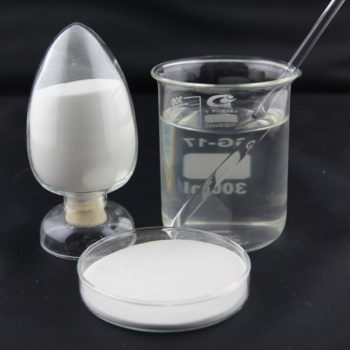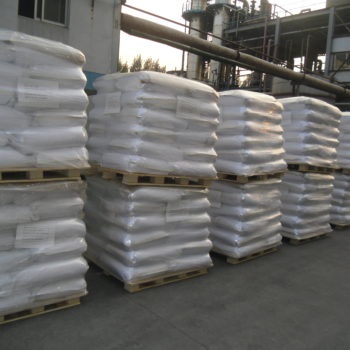The Role of HPMC in Enhancing Drug Stability and Shelf Life
HPMC as an Excipient: Why It’s Essential in Modern Drug Formulation
The Role of HPMC in Enhancing Drug Stability and Shelf Life
In the world of pharmaceuticals, drug stability and shelf life are of utmost importance. Patients rely on medications to be effective and safe, and pharmaceutical companies strive to deliver products that meet these expectations. One crucial component in achieving drug stability and extending shelf life is the use of appropriate excipients. Hydroxypropyl methylcellulose (HPMC) is one such excipient that has gained significant recognition for its role in enhancing drug stability and shelf life.
HPMC, a cellulose derivative, is widely used in the pharmaceutical industry as a binder, thickener, and film-forming agent. Its unique properties make it an ideal choice for drug formulation. One of the key advantages of HPMC is its ability to form a protective barrier around the active pharmaceutical ingredient (API), shielding it from environmental factors that can degrade its potency.
When drugs are exposed to moisture, light, or oxygen, they can undergo chemical reactions that lead to degradation. HPMC acts as a moisture barrier, preventing water molecules from reaching the API and causing hydrolysis or other moisture-induced reactions. This is particularly important for drugs that are sensitive to moisture, such as certain antibiotics or cardiovascular medications.
Furthermore, HPMC can protect drugs from the harmful effects of light. Ultraviolet (UV) radiation, present in sunlight and artificial light sources, can cause photochemical degradation of drugs. By forming a film around the API, HPMC acts as a shield, blocking UV rays and preserving the drug’s integrity. This is especially crucial for medications that are light-sensitive, such as certain antipsychotics or antihypertensives.
In addition to its protective properties, HPMC also plays a role in enhancing drug stability by improving the solubility and dissolution rate of poorly soluble drugs. Many drugs have limited solubility in water, which can hinder their absorption and bioavailability. HPMC, with its hydrophilic nature, can increase the solubility of these drugs by forming a gel-like matrix that facilitates their dissolution. This is particularly beneficial for oral medications, as it ensures that the drug is readily available for absorption in the gastrointestinal tract.
Moreover, HPMC can contribute to the stability of drug formulations by acting as a thickening agent. It imparts viscosity to liquid formulations, preventing sedimentation or phase separation. This is especially important for suspensions or emulsions, where the active ingredients may settle at the bottom or separate into distinct layers over time. By maintaining a uniform distribution of the drug throughout the formulation, HPMC ensures consistent dosing and efficacy.
The use of HPMC as an excipient in drug formulation has proven to be essential in modern pharmaceutical practices. Its ability to enhance drug stability and extend shelf life is invaluable in ensuring that medications remain effective and safe for patients. By forming a protective barrier, HPMC shields drugs from moisture and light, preventing degradation. Additionally, it improves the solubility and dissolution rate of poorly soluble drugs, enhancing their bioavailability. Furthermore, HPMC acts as a thickening agent, maintaining the uniformity of drug formulations and preventing sedimentation or phase separation.
In conclusion, HPMC is a versatile excipient that offers numerous benefits in drug formulation. Its role in enhancing drug stability and extending shelf life cannot be overstated. Pharmaceutical companies continue to rely on HPMC to ensure the efficacy and safety of their products, making it an essential component in modern drug formulation practices.
HPMC as a Versatile Binder and Disintegrant in Tablet Formulation
HPMC as an Excipient: Why It’s Essential in Modern Drug Formulation
In the world of pharmaceuticals, excipients play a crucial role in drug formulation. These inactive ingredients are essential for ensuring the stability, efficacy, and safety of the final product. One such excipient that has gained significant popularity in recent years is Hydroxypropyl Methylcellulose (HPMC). HPMC is a versatile binder and disintegrant that offers numerous benefits in tablet formulation.
Tablets are one of the most common dosage forms used in the pharmaceutical industry. They are convenient, easy to administer, and provide accurate dosing. However, the process of formulating tablets involves combining active pharmaceutical ingredients (APIs) with various excipients to achieve the desired characteristics. HPMC, with its unique properties, has become a go-to choice for many formulators.
As a binder, HPMC plays a crucial role in holding the tablet ingredients together. It acts as a glue, ensuring that the tablet maintains its shape and integrity. This is particularly important during manufacturing processes such as compression, where the tablet ingredients are subjected to high pressure. HPMC’s binding properties help prevent tablet disintegration or crumbling, ensuring that the tablet remains intact until it reaches the patient.
Moreover, HPMC also acts as a disintegrant, facilitating the rapid breakdown of tablets upon ingestion. When a tablet is swallowed, it needs to disintegrate quickly to release the API for absorption. HPMC’s ability to absorb water and swell aids in the disintegration process. It creates channels within the tablet, allowing water to penetrate and break it down into smaller particles. This enhances the dissolution rate of the API, ensuring its efficient absorption in the body.
Another advantage of using HPMC as a binder and disintegrant is its compatibility with a wide range of APIs and other excipients. It can be used in combination with other binders, fillers, and lubricants without compromising the tablet’s quality. This versatility allows formulators to create tablets with specific release profiles, such as immediate release, sustained release, or enteric-coated formulations.
Furthermore, HPMC offers excellent film-forming properties, making it an ideal choice for coating tablets. Coating tablets with a thin layer of HPMC provides several benefits. It improves the tablet’s appearance, making it more visually appealing and easier to swallow. Additionally, the coating can protect the tablet from moisture, light, and air, thereby enhancing its stability and shelf life. HPMC coatings can also be used to modify the release of the API, allowing for controlled or targeted drug delivery.
In conclusion, HPMC has become an essential excipient in modern drug formulation, particularly in tablet manufacturing. Its unique properties as a binder and disintegrant make it invaluable in ensuring the integrity and efficacy of tablets. Its compatibility with various APIs and excipients allows for versatile formulation options, while its film-forming properties enable the creation of visually appealing and stable tablets. As the pharmaceutical industry continues to evolve, HPMC will undoubtedly remain a key ingredient in the development of safe and effective medications.
HPMC’s Contribution to Controlled Drug Release and Bioavailability
HPMC, or hydroxypropyl methylcellulose, is a widely used excipient in modern drug formulation. It plays a crucial role in ensuring controlled drug release and enhancing bioavailability. In this section, we will explore the various ways in which HPMC contributes to these important aspects of drug development.
Controlled drug release is a critical factor in the effectiveness of many medications. It allows for a sustained and consistent release of the active pharmaceutical ingredient (API) over a specified period of time. HPMC is particularly well-suited for this purpose due to its unique properties. It is a hydrophilic polymer that forms a gel-like matrix when hydrated. This matrix acts as a barrier, controlling the diffusion of the API from the dosage form.
The controlled release mechanism of HPMC is based on the principle of erosion. As the hydrated gel matrix gradually erodes, the API is released in a controlled manner. The rate of erosion can be tailored by adjusting the viscosity grade and concentration of HPMC in the formulation. This flexibility allows formulators to design drug delivery systems that meet specific therapeutic needs.
Furthermore, HPMC can be combined with other excipients to achieve different release profiles. For example, the addition of a hydrophobic polymer can create a sustained-release formulation with a delayed onset of action. This is particularly useful for drugs that require a slow and prolonged release to maintain therapeutic levels in the body.
In addition to controlled drug release, HPMC also plays a crucial role in enhancing the bioavailability of drugs. Bioavailability refers to the extent and rate at which the API is absorbed into the systemic circulation. HPMC improves bioavailability by increasing the solubility and dissolution rate of poorly soluble drugs.
HPMC acts as a solubilizing agent, enhancing the solubility of hydrophobic APIs in aqueous media. It forms a stable complex with the drug molecules, preventing their aggregation and precipitation. This allows for a higher concentration of the drug to be dissolved, leading to improved absorption and bioavailability.
Moreover, HPMC can also improve the dissolution rate of poorly soluble drugs. It forms a viscous gel layer on the surface of the drug particles, preventing their agglomeration and enhancing their dispersion in the dissolution medium. This increased surface area facilitates faster dissolution and subsequent absorption of the drug.
In conclusion, HPMC is an essential excipient in modern drug formulation due to its contribution to controlled drug release and enhanced bioavailability. Its ability to form a gel-like matrix enables the sustained and consistent release of the API, while its solubilizing and dissolution-enhancing properties improve the bioavailability of poorly soluble drugs. The versatility of HPMC allows formulators to design drug delivery systems that meet specific therapeutic needs. As pharmaceutical research continues to advance, HPMC will undoubtedly remain a key ingredient in the development of effective and efficient medications.
Q&A
1. What is HPMC?
HPMC stands for Hydroxypropyl Methylcellulose. It is a cellulose-based polymer derived from plant fibers.
2. Why is HPMC essential in modern drug formulation?
HPMC is widely used as an excipient in drug formulation due to its various beneficial properties. It acts as a binder, thickener, and film-former, providing structural integrity to tablets and capsules. It also enhances drug solubility, controls drug release, and improves bioavailability.
3. What are the advantages of using HPMC as an excipient?
Some advantages of using HPMC as an excipient include its compatibility with a wide range of drugs, its ability to form stable gels, its non-toxic nature, and its resistance to enzymatic degradation. Additionally, HPMC is easily available, cost-effective, and has a long shelf life.


